The start of each school year is a very special time. I always feel that it is a better, fresher, newer start than January 1. On New Year’s Eve, we toast best wishes and make personal promises to be better people. We make resolutions about new beginnings–like starting and using a gym membership or eating healthfully.
Similarly, on the eve of the first day of school, we wish ourselves and our colleagues best wishes on a successful year and make promises to be better teachers. Often these resolutions involve helping all students succeed and maintaining our sanity.
I find two practices particularly helpful to start the school year with a better track record than I had with my last resolution (staying in shape)–it was just too cold last winter to go the gym!
REFLECTING
 As I look forward to a new school year, I know that it is a new beginning and a chance to try again. I am a little more experienced and hopefully wiser. And though I’m looking forward to a new year, I have to begin by looking back. I have to reflect. Reflection on past units, past teaching, past behaviors and past outcomes is my first recommendation for a successful year. Here are a few ways that I reflect:
As I look forward to a new school year, I know that it is a new beginning and a chance to try again. I am a little more experienced and hopefully wiser. And though I’m looking forward to a new year, I have to begin by looking back. I have to reflect. Reflection on past units, past teaching, past behaviors and past outcomes is my first recommendation for a successful year. Here are a few ways that I reflect:
•Look at my past planning book: I like to remind myself of school meetings and testing dates, as well as the timing of lessons and units.
•Review notes I made on units: Throughout the year, I make notes to myself about the things that need updating on lessons including note sheets, mentor texts, and timing.
•Revisit relevant texts including professional literature: Often during the school year, I’ll read professional texts and place post-its at parts I like or want to re-read. At the beginning of the year, I revisit these sections because I can implement new strategies better at the beginning of the year.
•Enjoy keepsakes from past students: It has become a habit of mine to keep thank you notes from students in my writer’s notebook.
While much of my reflection at this point in the year is personal and based mainly on my teaching practice around lessons, I’ve realized that I can plan as much as I want to for my classroom, just as I planned to go the gym; however, plans cannot be carried out without modeling.
MODELING
Modeling expectations is another way important way to begin the year. For example, a workout buddy could have helped me get to the gym–modeling is inspiring. Likewise, a lesson on expectations for notebook setup can show students the habit of daily work in their writer’s notebook. In the first weeks of school, I model all expected behaviors. I will not hesitate to tell you that I model everything from what entering our classroom looks like to what good readers do while reading.
But I didn’t always model expectations. One particularly poignant example of this failure happened mid-year after I attended a writing workshop. I left the workshop excited and armed with great teaching language like, “Write what needs to be written.” In class the next day, I told the kids, “take some time to write what needs to be written.” I also added that I would write while they wrote. Sitting down to write, I realized I had twenty-five students staring at me. One hesitantly raised his hand and asked, “What should we write about?” With a bit more explanation, they wrote, but the outcome was stilted and weak. Little writing was produced, and it had little value in terms of genre and topic. I realized that I needed to model what this work could look like in our classroom.
 Now, I start the year with these explicit lessons:
Now, I start the year with these explicit lessons:
•Notebook setup – pages, labels, table of contents, etc.
•Writing strategies (Interludes and Strategies for Generating Notebook Entries)
•Writing choices
•Reading strategies (choosing books, reading expectations, thinking work)
•Reading choices
These lessons help my students to see expectations, achieve excellence, and consider opportunities. They also begin to build a framework for later work in my classroom. Early in the year, students’ work will generally resemble mine in length, topic, and form, but with more practice and more modeling, their work becomes individual, useful, unique, and skilled. They quickly realize that not everyone’s work looks the same. Modeling classroom expectations has helped my students become more successful and independent.
Considering how I use modeling and reflection in my classroom, I want to transfer this success to my gym resolution with the start of this new year. I am going to go to the gym when there are scheduled classes. My reflection on my past attendance shows me that I do well when things are planned and part of a routine. I do better with these classes because an instructor models a good workout. With continued practice this year, my teaching and my resolutions will be more successful. I also realize that the nice thing about these recommendations is that it’s never too late to start. Reflect today and model tomorrow.
 Amy Gurney is an 8th grade Language Arts teacher for Bloomfield Hills School District. She was a facilitator for the release of the MAISA units of study. She has studied, researched, and practiced reading and writing workshop through Oakland Schools, The Teacher’s College, and action research projects. She earned a Bachelor of Science in Education at Central Michigan University and a Master’s in Educational Administration at Michigan State University.
Amy Gurney is an 8th grade Language Arts teacher for Bloomfield Hills School District. She was a facilitator for the release of the MAISA units of study. She has studied, researched, and practiced reading and writing workshop through Oakland Schools, The Teacher’s College, and action research projects. She earned a Bachelor of Science in Education at Central Michigan University and a Master’s in Educational Administration at Michigan State University.

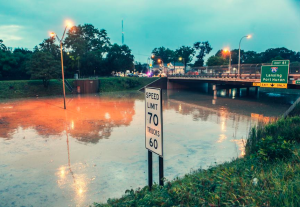
 Lisa Kraiza teachers eighth grade English Language Arts at Oak Park Preparatory Academy. She is also a member of the Core Leadership Team of the
Lisa Kraiza teachers eighth grade English Language Arts at Oak Park Preparatory Academy. She is also a member of the Core Leadership Team of the  The name tags were ready, pencils were sharpened. The fall is always an exciting time in first grade. This was my fourteenth 1st day of school, and I was ready. My lesson plan book was proof that I had it all planned out. The on-demand writing paper was copied, the math fact test was ready to give, and I even had my students’ names written on running record recording sheets. I know my Common Core Standards, and I am clear on my classroom procedures. However, the first few days of school did not go as I had so carefully planned. My lesson plans barely got a glance, and those copies never got used. They will…but I realized my time needed to be spent doing more important things.
The name tags were ready, pencils were sharpened. The fall is always an exciting time in first grade. This was my fourteenth 1st day of school, and I was ready. My lesson plan book was proof that I had it all planned out. The on-demand writing paper was copied, the math fact test was ready to give, and I even had my students’ names written on running record recording sheets. I know my Common Core Standards, and I am clear on my classroom procedures. However, the first few days of school did not go as I had so carefully planned. My lesson plans barely got a glance, and those copies never got used. They will…but I realized my time needed to be spent doing more important things.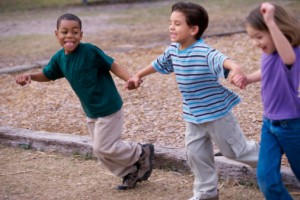 These important things also included watching my students. I watched them play outside, and I even joined in. I went from being a Power Ranger to eating pizza with Ninja Turtles. I gave pushes on the swing and watched a group of girls try the monkey bars. In the classroom, I watched what books my students chose and what pictures they drew. Yep, the books I spent hours organizing were mixed up a bit, but the reason was because the kids were interested in all my informational books. During writing time, I noticed who was eager to write and who needed a little motivation. During choice time, I noticed I already had some Lego engineers! I also have artists! I have some very creative minds!
These important things also included watching my students. I watched them play outside, and I even joined in. I went from being a Power Ranger to eating pizza with Ninja Turtles. I gave pushes on the swing and watched a group of girls try the monkey bars. In the classroom, I watched what books my students chose and what pictures they drew. Yep, the books I spent hours organizing were mixed up a bit, but the reason was because the kids were interested in all my informational books. During writing time, I noticed who was eager to write and who needed a little motivation. During choice time, I noticed I already had some Lego engineers! I also have artists! I have some very creative minds! I know the most important thing I can do is establish a relationship with my students. I want to find their passion and what motivates them. I will use all my observations in future lessons to make sure my instruction is relevant and interesting to them. I realized my “how-to” writing lesson will be about the monkey bars, and I am currently looking for books with adventure characters like Ninja Turtles. At the store, I picked up some more watercolors and at the end of each unit when they “fancy up” their stories they can paint their pictures if they want to. My math lesson on number sense will involve Legos. Those informational books they mixed up are now our new “book look books” ready for Monday. I will do what it takes to have my students trust me and truly feel safe and secure. I want them to know that they matter. I want to use their interests in my future lessons. I want them to make mistakes and be comfortable knowing that mistakes are a part of learning. I know my students will learn and grow this year. I believe in them and know they will be successful. I know what I need to do right now and throughout the entire school year…..talk, listen, watch and notice.
I know the most important thing I can do is establish a relationship with my students. I want to find their passion and what motivates them. I will use all my observations in future lessons to make sure my instruction is relevant and interesting to them. I realized my “how-to” writing lesson will be about the monkey bars, and I am currently looking for books with adventure characters like Ninja Turtles. At the store, I picked up some more watercolors and at the end of each unit when they “fancy up” their stories they can paint their pictures if they want to. My math lesson on number sense will involve Legos. Those informational books they mixed up are now our new “book look books” ready for Monday. I will do what it takes to have my students trust me and truly feel safe and secure. I want them to know that they matter. I want to use their interests in my future lessons. I want them to make mistakes and be comfortable knowing that mistakes are a part of learning. I know my students will learn and grow this year. I believe in them and know they will be successful. I know what I need to do right now and throughout the entire school year…..talk, listen, watch and notice.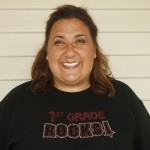 Amy Quinn is a first grade teacher at Gretchko Elementary School in West Bloomfield, MI. She is a graduate of Oakland University and has her Masters in Early Childhood. Amy was an active participant in the
Amy Quinn is a first grade teacher at Gretchko Elementary School in West Bloomfield, MI. She is a graduate of Oakland University and has her Masters in Early Childhood. Amy was an active participant in the  A few weeks ago, I had the rare pleasure of meeting some girlfriends for dinner and leaving my two-year-old and five- year-old home with a babysitter. On my way to dinner, I realized I had about 45 minutes to kill. Naturally, I chose the library. 45 whole minutes wandering the stacks for a new book without having to shush Captain Question or calm The Tornado? Intoxicating.
A few weeks ago, I had the rare pleasure of meeting some girlfriends for dinner and leaving my two-year-old and five- year-old home with a babysitter. On my way to dinner, I realized I had about 45 minutes to kill. Naturally, I chose the library. 45 whole minutes wandering the stacks for a new book without having to shush Captain Question or calm The Tornado? Intoxicating. After a department book study of
After a department book study of  I read every YA book I could get my hands on this summer. For whatever reason, kids actually seem to listen when we recommend specific books to them. They don’t want a list; they want a personal recommendation. On the first day of school, a young lady told me she “hated reading” and was “really bad at it.” I pressed for clarification, and she admitted she had only ever liked reading
I read every YA book I could get my hands on this summer. For whatever reason, kids actually seem to listen when we recommend specific books to them. They don’t want a list; they want a personal recommendation. On the first day of school, a young lady told me she “hated reading” and was “really bad at it.” I pressed for clarification, and she admitted she had only ever liked reading  I required my students to start Goodreads accounts.
I required my students to start Goodreads accounts.  Hattie Maguire is an English teacher and Content Area Leader at Novi High School. She is spending her fourteenth year in the classroom teaching AP English Language and Composition, English 10, Debate, and Practical Public Speaking. She is a National Board Certified Teacher who earned her BS in English and MA in Curriculum and Teaching from Michigan State University.
Hattie Maguire is an English teacher and Content Area Leader at Novi High School. She is spending her fourteenth year in the classroom teaching AP English Language and Composition, English 10, Debate, and Practical Public Speaking. She is a National Board Certified Teacher who earned her BS in English and MA in Curriculum and Teaching from Michigan State University.
 I am in a play. It’s an Avondale Schools staff and alumni production of Thornton Wilder’s Our Town. My role is Doc Gibbs. I have never acted or been part of theater company, but I was asked by a colleague to take a risk and show my students I wasn’t afraid to step outside the usual role of teacher. I was intrigued. I accepted the invitation.
I am in a play. It’s an Avondale Schools staff and alumni production of Thornton Wilder’s Our Town. My role is Doc Gibbs. I have never acted or been part of theater company, but I was asked by a colleague to take a risk and show my students I wasn’t afraid to step outside the usual role of teacher. I was intrigued. I accepted the invitation. Writing is also an unnatural act. Human beings have a voice box that evolution has designed to create speech. It’s unique to us. We have no such organ designed for writing. Speech is natural; writing is not. I encountered this idea in a piece by Dylan B. Dryer, a professor at the University of Maine. He contends that when measured against the naturalness and ease of speech, writers tend to judge their efforts harshly. This idea was banging around in my head when I took up the script of Our Town to learn my lines.
Writing is also an unnatural act. Human beings have a voice box that evolution has designed to create speech. It’s unique to us. We have no such organ designed for writing. Speech is natural; writing is not. I encountered this idea in a piece by Dylan B. Dryer, a professor at the University of Maine. He contends that when measured against the naturalness and ease of speech, writers tend to judge their efforts harshly. This idea was banging around in my head when I took up the script of Our Town to learn my lines. For years I approached teaching writing as though it were natural, as natural as speaking. I exposed students to “good writing,” provided models and rubric, and gave instruction. But the idea at the core was that the ability to write well was buried somewhere inside of my students and by my efforts, it would be awakened–this dormant, but natural, ability. After all, they can speak in sentences and that skill developed because they were spoken to, or were near other speakers. They learned by osmosis or proximity. The same should hold for the written word. I thought good writing would rub off on my students the way good or bad habits of speech do. I considered writing a natural act, and I taught it that way. To be fair, this is how I was taught. Some of my students did become good writers, but most didn’t. They didn’t simply move from speaking to writing with a bumpy transition period. It was frustrating for them and for me.
For years I approached teaching writing as though it were natural, as natural as speaking. I exposed students to “good writing,” provided models and rubric, and gave instruction. But the idea at the core was that the ability to write well was buried somewhere inside of my students and by my efforts, it would be awakened–this dormant, but natural, ability. After all, they can speak in sentences and that skill developed because they were spoken to, or were near other speakers. They learned by osmosis or proximity. The same should hold for the written word. I thought good writing would rub off on my students the way good or bad habits of speech do. I considered writing a natural act, and I taught it that way. To be fair, this is how I was taught. Some of my students did become good writers, but most didn’t. They didn’t simply move from speaking to writing with a bumpy transition period. It was frustrating for them and for me. I wanted to be a better teacher, so I started working through different approaches and models. I pieced things together, tried, and failed and attempted to learn from my efforts. Gradually, I got better, but when I encountered the idea of writing as unnatural it crystallized for me. Of course my early efforts were misguided. My expectations were based on a false premise. Writing habits aren’t something my students could naturally adopt because writing is unnatural. Before I came to this idea, I looked at writing the way I might’ve looked at something natural, say walking. My students needed needed help standing: so I gave them a framework to lean on, the 5 paragraph essay, until they got steady. They leaned on these complicated rubrics and paragraph models that looked like a set of Ikea instructions. But their writing was mechanical and clumsy and bore no resemblance to the writing we read and they liked.
I wanted to be a better teacher, so I started working through different approaches and models. I pieced things together, tried, and failed and attempted to learn from my efforts. Gradually, I got better, but when I encountered the idea of writing as unnatural it crystallized for me. Of course my early efforts were misguided. My expectations were based on a false premise. Writing habits aren’t something my students could naturally adopt because writing is unnatural. Before I came to this idea, I looked at writing the way I might’ve looked at something natural, say walking. My students needed needed help standing: so I gave them a framework to lean on, the 5 paragraph essay, until they got steady. They leaned on these complicated rubrics and paragraph models that looked like a set of Ikea instructions. But their writing was mechanical and clumsy and bore no resemblance to the writing we read and they liked. Realizing that writing is not natural changed the way I approach teaching it. It isn’t an ability to be awakened any more than a father’s ability to talk to his son. It is a habit that is developed. With this in mind, I find it easier and more natural that we should have to work so hard at writing and teaching writing. My students and I participate in the unnatural act of writing together. I keep a writer’s’ notebook and write with them, sharing my own frustrations with this unnatural activity. Unnatural activities have to be made less uncomfortable and that can happen by simply acknowledging the difficulty, not from without as a “teacher” of writing, but as member of the struggling writing community. It involves taking risks by making our thoughts and habits public. In this way, acting and writing feel oddly similar. I didn’t know I touched my face when I was nervous until I had to communicate a character to an audience from the stage, and I didn’t notice my love of alliterative language until a reader of my writing pointed it out to me. Turns out, both habits are distracting.
Realizing that writing is not natural changed the way I approach teaching it. It isn’t an ability to be awakened any more than a father’s ability to talk to his son. It is a habit that is developed. With this in mind, I find it easier and more natural that we should have to work so hard at writing and teaching writing. My students and I participate in the unnatural act of writing together. I keep a writer’s’ notebook and write with them, sharing my own frustrations with this unnatural activity. Unnatural activities have to be made less uncomfortable and that can happen by simply acknowledging the difficulty, not from without as a “teacher” of writing, but as member of the struggling writing community. It involves taking risks by making our thoughts and habits public. In this way, acting and writing feel oddly similar. I didn’t know I touched my face when I was nervous until I had to communicate a character to an audience from the stage, and I didn’t notice my love of alliterative language until a reader of my writing pointed it out to me. Turns out, both habits are distracting.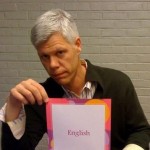 Rick Kreinbring teaches English at Avondale High School in Auburn Hills, Michigan. His current assignments include AP Language and Composition and AP Literature and Composition. He is a member of a
Rick Kreinbring teaches English at Avondale High School in Auburn Hills, Michigan. His current assignments include AP Language and Composition and AP Literature and Composition. He is a member of a 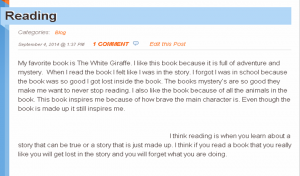

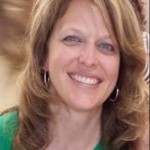
 In July, I was selected to serve on a jury for an armed robbery trial at the Oakland County Courthouse. I’d never watched a real trial, only seen clips on CNN from particularly salacious, high-profile cases–Jodi Arias and Casey Anthony most recently. The armed robbery case wasn’t salacious, just kind of strange and full of inconsistencies. But just like on t.v., the stakes in the courtroom were high. And even more compelling were the elements of argument present throughout the trial–the defense and the prosecution battling it out over their claims, the witnesses presenting their versions of the story, which the lawyers shaped into evidence with their lines of questioning and opening and closing statements. Over those two and a half days, argument came to life for me in a way that it never had when I taught academic argument in middle school and college classrooms.
In July, I was selected to serve on a jury for an armed robbery trial at the Oakland County Courthouse. I’d never watched a real trial, only seen clips on CNN from particularly salacious, high-profile cases–Jodi Arias and Casey Anthony most recently. The armed robbery case wasn’t salacious, just kind of strange and full of inconsistencies. But just like on t.v., the stakes in the courtroom were high. And even more compelling were the elements of argument present throughout the trial–the defense and the prosecution battling it out over their claims, the witnesses presenting their versions of the story, which the lawyers shaped into evidence with their lines of questioning and opening and closing statements. Over those two and a half days, argument came to life for me in a way that it never had when I taught academic argument in middle school and college classrooms. The trial began with opening statements–the lawyers submitting claims of guilt and innocence to us with an overview of the evidence, angled differently by the prosecution and the defense. Our attention was grabbed; we were enticed first by one side, then the other. It felt a lot like the opening paragraphs of a good essay.
The trial began with opening statements–the lawyers submitting claims of guilt and innocence to us with an overview of the evidence, angled differently by the prosecution and the defense. Our attention was grabbed; we were enticed first by one side, then the other. It felt a lot like the opening paragraphs of a good essay.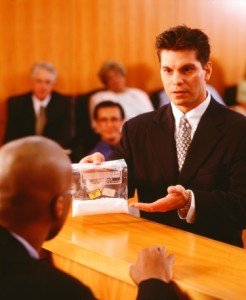 A few cops testified, then a friend of the supposed victim, and then the victim himself. No one had the same story. Few elements of the witnesses’ narratives even overlapped–there was a knife involved, and it was a bitter cold day. That was it. But the prosecutor and the defense attorneys’ lines of questioning were both artful — they constructed arguments with their questions.
A few cops testified, then a friend of the supposed victim, and then the victim himself. No one had the same story. Few elements of the witnesses’ narratives even overlapped–there was a knife involved, and it was a bitter cold day. That was it. But the prosecutor and the defense attorneys’ lines of questioning were both artful — they constructed arguments with their questions.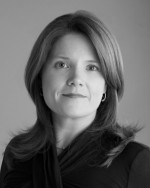 Delia DeCourcy joined Oakland Schools in 2013 after a stint as an independent education consultant in North Carolina where her focus was on ed tech integration and literacy instruction. During that time, she was also a lead writer for the
Delia DeCourcy joined Oakland Schools in 2013 after a stint as an independent education consultant in North Carolina where her focus was on ed tech integration and literacy instruction. During that time, she was also a lead writer for the